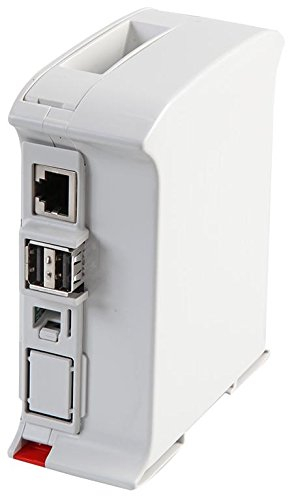C3-like dev board?
in Propeller 2
Hi again,
I'm wondering if/when we might get a retrocomputer-style dev board for the P2 like the C3 was for the P1?
Thanks.


Comments
Our friend @cgracey frequently suggests the idea of a stand-alone P2 computer. I'd like to see something like the Hydra and C3 mixed using the capabilities of the P2. Would be fun for retro gamers and students of all levels. At this point, I don't think anything is in development.
Thinking the idea of credit card computer is completely eclipsed by RasPi.
Still, my SimpleP2++ board has some similar ideas/features as C3...
@AndreL getting Parallax to build and sell the boards was a neat trick.
Probably cheaper to get made in China these days? Except for P2 chip cost of course...
I want to do one in a Pi footprint so you can use all those cool cases. But time, life, etc.
Absolutely. The Hydra package was what got me hooked. It was a brilliant piece of kit with great documentation. And programming it was fun - enough fun to justify learning about this strange beast called the Propeller - even though it had (at the time) only its own dinky little programming language called ... ummm ... Spiral ... or something like that
I think the good thing about these kind of boards is that one can supply example code that doesn't need to adjusted in any way (like setting basepins, etc.) to work.
Just works out of the box... Makes it easy to get started...
Aliexpress has a mini I2C Keyboard for under $10 :
https://aliexpress.us/item/3256804427382386.html
-- might make a single board computer for the P2 easier , just add a SPI LCD with it.
I imagine usb kb is cheaper/easier?
But if that is Qwiic compatible, might be interesting…
'+' for this one. There are bananas, oranges, who knows what else fruits and even vegetables (eg. russian/chinese "repka pi" (repka means turnip) using not only ARMs but also RISC V, sharing the same "raspberry Pi type" dimensions and connectors.
So why not a Propeller Pi?
All of these suggestions are fine and dandy, BUT, how is Parallax going to sell it for $35.00?
Ray
An arm board running linux is completely different, I think, from the learning experience you get with a microcontroller running no OS or a minimal OS.
A similar project which has been popular recently:
https://www.commanderx16.com/
https://cx16forum.github.io/faq.html
They're not. They manufacture in CA ($) and they don't get gov't subsidies like the RPi folks do.
New Pis are no more $35. Pi5 costs at least $60
Craig

Excellent example. I don't care for the complexity, but at least they have a standard platform that has gained some developers.
The Propeller DemoBoard did this as well. An update of that or C3 or Hydra officially developed by Parallax for the P2 would be great. So far the P2Eval board and IO adapters takes that spot, but at a price of over $150, it hasn't got enough traction, though the IO module design has.
Excellent board. Do you have these for sale? Did you get them to reliably run at 340MHz+ reliably?
Ada said you have one with 64MB of memory. Is that true?
Plan is to start selling them Jan.1, 2024.
Some of them can run at 340 MHz and more. Not sure exactly how reliable though. I wouldn't use it that way for anything important...
Guess have to bin them up by speed. I imagine some people don't care about going above 300 MHz.
Funny how it is relatively easy to get a P2 board to run at 300 MHz. But, getting more than that is a challenge...
Is there something magic about 340mhz or is it just "the more the better"?
One of my goals was to get the NeoYume emulator working and that needs 340 MHz.
There's also MegaYume that needs 320 MHz.
Seems it takes a 4 layer board to get to 320 MHz quasi-reliably and 340 MHz sometimes.
Appears need 6 layers, like Parallax does, to get consistent 340 MHz performance.
But, that's too much for me